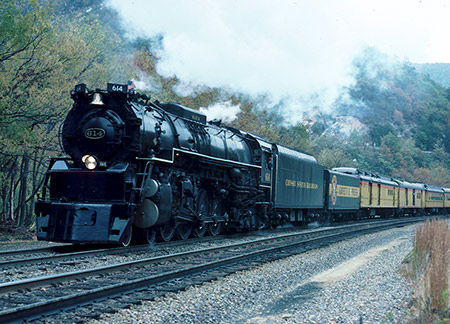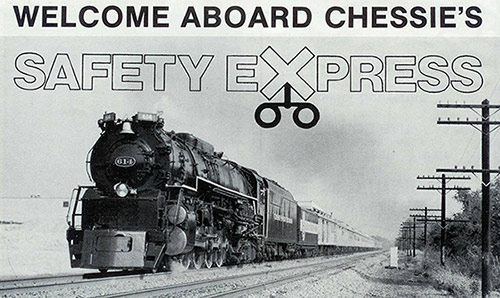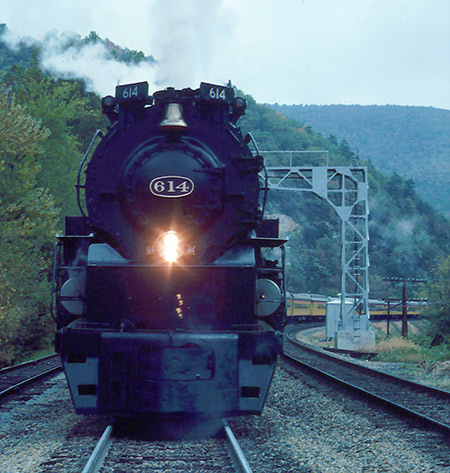
|
||||
The
1980 - 1981 "Look, Listen, and Live" The motto of Operation Lifesaver was what the Chessie Safety Express was all about. From September 13, 1980 to November 1, 1981, the steam-powered Safety Express criss-crossed the Chessie System Railroads with its message of grade-crossing caution for drivers and pedestrians everywhere. __________________
|
 |
|||
In the spring of 1980, the Chessie System -- like all railroads -- was, as ever, looking to find ways to reduce grade-crossing accidents. These intersections where rail and road traffic meet have always been dangerous places for the inattentive and the daring. The national effort to curb grade-crossing accidents was, and is, known as Operation Lifesaver. Its message is simple enough. Ingraining that message in people's minds is not so simple. What could Chessie add to the message to leave a bigger impression? William F. Howes Jr. was Chessie's VP of Casualty Prevention, and part of his job was coordinating the road's Operation Lifesaver efforts. He had also been the point man for the Chessie Steam Special of 1977-78. With Chesapeake & Ohio steam locomotive 614 then undergoing restoration and in need of a train to pull, what better than to make its first assignment a benefit to the road's Operation Lifesaver campaign? President of the railroad Hays T. Watkins agreed, and the Safety Express was given a green light.
Ross Rowland and his Steam Locomotive Corp of America finished their restoration and leased the locomotive and a crew to the Chessie in time for a debut just after Labor Day. On September 13, 1980, the Chessie Steam Special made its first excursion in the name of Operation Lifesaver. Main line steam had returned to the Chessie in less than two years. The new incarnation of 'the yellow train' ran twenty tours in late 1980. President Dick Sanborn of the SCL/Family Lines Rail System was so impressed, he wanted to 'borrow' the train for a similar campaign in Florida during Chessie's 'off season'. And so the steam locomotive and its train were temporarily reborn as the Family Line's Safety Express for twelve successful winter excursions in the Sunshine State. Springtime saw the train lengthened by four cars and again ready for its closeup, as the Chessie Safety Express started its second season on April 25, 1981. For more than six months, the CSE would ply the rails of the Chessie System, spreading its message of grade-crossing safety for all to hear. From magazines, to TV and radio, word of the CSE and its Operation Lifesaver message was hard to miss in the summer of 1981. The last tour came November 1, 1981 -- a sold out trip through the New River Gorge. In the end, the campaign was gauged a great success. Grade-crossing accidents on the Chessie spiked down 10% that year. The CSE likely saved several lives. In that light, the value of the Chessie Safety Express, its staff and crew, was beyond calculation. |
||||


